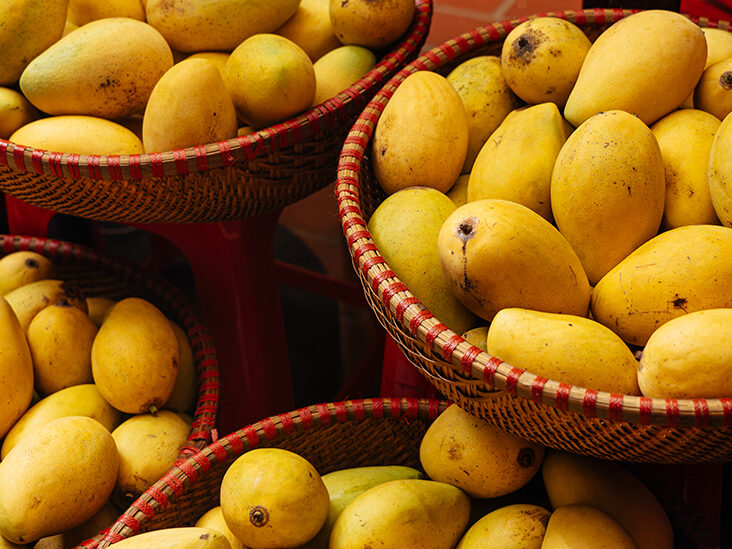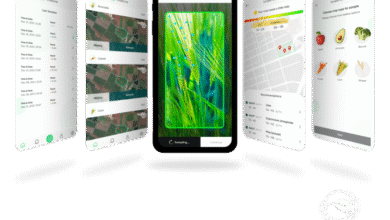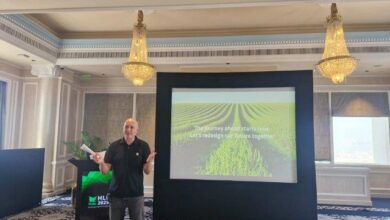noam alkan, pradeep kumar, dalia maurer, oleg feygenberg and susan lurie-zaslavski. department of postharvest science, volcani center
mango is an economically important fruit, distributed worldwide, and known for its aroma, peel color, good taste and nutritional value. however, mango is also highly perishable; soon after ripening, the fruit starts decaying and quickly becomes unfit for consumption. cold storage is the best postharvest technology to maintain high-quality fruit. however, subtropical fruit sar sensitive to low temperatures. thus, chilling injury occurs when mango fruits are stored at a temperature below 12 °c. this limits the application of cold storage to extend mango storage life. chilling injuries of mango fruits are expressed in skin discoloration, particularly browning, sunken lesions on the peel, lenticel discoloration, uneven ripening, poor color, reduced aroma and flavor, and increased susceptibility to decay. these are the result of changes in membrane fluidity, lipids composition, proteins and carbohydrates.
many biotic or abiotic stresses induce resistance in plants, termed ‘induced resistance’, which activates latent defense mechanisms in order to protect plants against future attack by pathogens and abiotic stresses. abiotic stresses include low and high temperatures, uv exposure and drought. in response to abiotic stress, plants can produce defense-related compounds. for example, sunlight contains uv light, and many fruits, including mango, when exposed to sunlight will produce anthocyanins as a sunshield to protect their tissues. anthocyanin pigments are secondary metabolites of the phenylpropanoid pathway that give a red blush to the mango’s fruit skin. other compounds synthesized by this pathway are flavonoids. both anthocyanins and flavonoids have antioxidant activity and anti-pathogen activity and are known as health-related compounds.
different mango cultivars differ in their accumulation of anthocyanins and development of red blush. mango fruits of eighty-three cultivars were collected at a similar ripening stage from a volcani center germline collection and from selected breeding lines. the cultivars were harvested at the mature stage and ranged from fully red colored, to no red blush. the fruits were held for 2 weeks at a sub-optimal temperature of 6°c to test for resistance to chilling injury, and inoculated with colletotrichum gloeosporioides in order to test for pathogen resistance. when separated into two groups, green peel or with red blushed cultivars, the cultivars without red coloring were more susceptible to cold and pathogen attack and developed chilling injuries, and a larger decay area development than cultivars with red blush (kuamr et al., 2018).
when a plant or fruit has been exposed to a mild stress, which activates resistance mechanisms, it often is resistant to other stresses; this is termed ‘cross-tolerance’. fruits which have been exposed to high temperatures, or anaerobic conditions, or uv light, develop resistance to low temperature and can be stored at sub-optimal temperatures without developing chilling injury. what’s more, they are more resistant to pathogen attack.
in response to sunlight, mango fruits activate the phenylpropanoid pathway, which produces increased anthocyanin and flavonoids (sivankalyani et al., 2016). as expected, mango fruits that were subjected to sunlight at the orchard and developed red color were significantly more resistant to chilling injuries and to pathogen infection (sivankalyani et al., 2016; sudheeran et al., 2018). in examining green and red peel tissue of mangos, it was found that anthocyanin and flavonoid content were highest in the red peel. the anthocyanins were methyl cyanidin and cyanidin, while the flavonoids were quercetin and kaempferol (sudheeran et al., 2018). organic extract from red or green peel were tested for inhibition of c.gloeosporioides in vitro. interestingly, extracts from red peel had a greater inhibitory effect on both spore germination and hyphal growth than green extracts. therefore, the organic compounds in the red peel provide resistance to fungal infection.
this suggested that treatments that enhance red peel blush would result in resistant fruits that would store better. to enhance blushed mango peel in successful cultivars, mango trees were pruned to enhance sunlight penetration into the canopy. light intensity in the center of the tree was increased five-fold, and 85% of the fruits had red blush at harvest compared to less than 40% in untrimmed trees, where only the external fruit received direct sunlight.
plant hormones mediate the activation of defense mechanisms in plants or fruits. these plant hormones include jasmonic acid, salicylic acid and abscisic acid, and are produced by the plant tissue in response to stress. in some cases, external application of these compounds will induce stress resistance without applying any stress.
prohydrojasmon (pdj; an analog of jasmonic acid) and s-abscisic acid (s-aba) were applied in orchards two weeks before harvesting on three mango cultivars to see if the plant hormones would improve red color in mango fruits. both compounds (pdj and s-aba) increased red blush on the fruit at harvest. in storage experiments, the jasmonic acid-treated fruits also developed less chilling injuries and decay than untreated fruits.
in summary, orchard treatments as pruning or preharvest treatments with natural compounds significantly increase the red coloration of mango fruits. the red, attractive mango fruits were suggested to have health beneficial attributes. the red mango fruit is also more resistant to postharvest decay development. thus, treatments such as sunlight and/or natural plant hormones treatment enhance fruit red color and its resistance to cold and decay (figure 1). because red mango fruits are more resistant, they can be stored for longer periods of time and at a lower temperature and lead to reduced food loss.
we suggest that the compounds of the phenylpropanoid pathway, anthocyanins and flavonoids, lead to protection against biotic stress by inhibiting fungal development and against abiotic effect by enhancing antioxidant activity and protection against oxidative damage to membranes and other cellular components.
references.
kumar, s.p.; feygenberg, o.; maurer, d.; diskins, s.; saada, d.; cohen, y.; luria, s.; alkan, n. anthocyanin in mango fruit peel is associated with cold and pathogen resistance. acta horticulturae2018, in press.
sivankalyani, v., feygenberg, o., diskin, s., wright, b., & alkan, n. (2016). increased anthocyanin and flavonoids in mango fruit peel are associated with cold and pathogen resistance. postharvest biology and technology, 111, 132-139.
sudheeran, p. k., feygenberg, o., maurer, d., & alkan, n. (2018). improved cold tolerance of mango fruit with enhanced anthocyanin and flavonoid contents. molecules, 23(7).
figure 1.a scheme describing that the exposure to sunlight at the orchard or preharvest treatments with the natural pdj or s-aba leads to enhanced red-blushed peel of mango fruits by inducing synthesis of anthocyanins and flavanols, which are antioxidant and antifungal compounds. thus, resulting in red mango fruit that is more resistant to both biotic stress (anthracnose decay) and abiotic stress (chilling injuries) that resulted in reduced lipid peroxidation measured by auto-luminescence.





